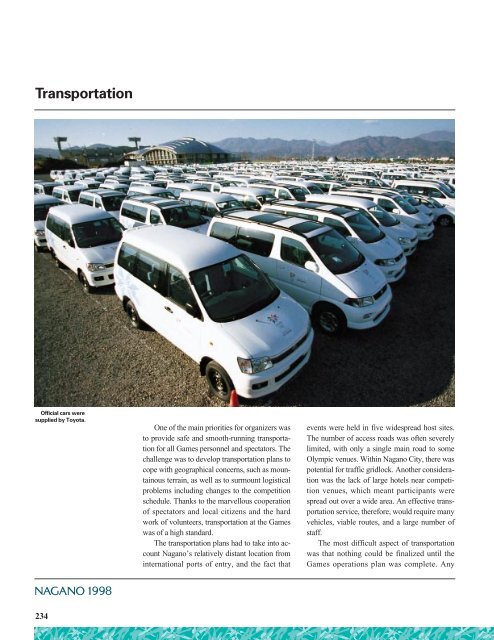107th IOC Session - LA84 Foundation
107th IOC Session - LA84 Foundation
107th IOC Session - LA84 Foundation
You also want an ePaper? Increase the reach of your titles
YUMPU automatically turns print PDFs into web optimized ePapers that Google loves.
Transportation<br />
Official cars were<br />
supplied by Toyota.<br />
234<br />
One of the main priorities for organizers was<br />
to provide safe and smooth-running transportation<br />
for all Games personnel and spectators. The<br />
challenge was to develop transportation plans to<br />
cope with geographical concerns, such as mountainous<br />
terrain, as well as to surmount logistical<br />
problems including changes to the competition<br />
schedule. Thanks to the marvellous cooperation<br />
of spectators and local citizens and the hard<br />
work of volunteers, transportation at the Games<br />
was of a high standard.<br />
The transportation plans had to take into account<br />
Nagano’s relatively distant location from<br />
international ports of entry, and the fact that<br />
events were held in five widespread host sites.<br />
The number of access roads was often severely<br />
limited, with only a single main road to some<br />
Olympic venues. Within Nagano City, there was<br />
potential for traffic gridlock. Another consideration<br />
was the lack of large hotels near competition<br />
venues, which meant participants were<br />
spread out over a wide area. An effective transportation<br />
service, therefore, would require many<br />
vehicles, viable routes, and a large number of<br />
staff.<br />
The most difficult aspect of transportation<br />
was that nothing could be finalized until the<br />
Games operations plan was complete. Any
















